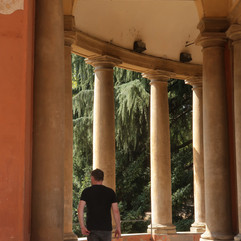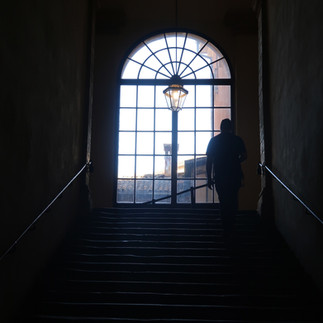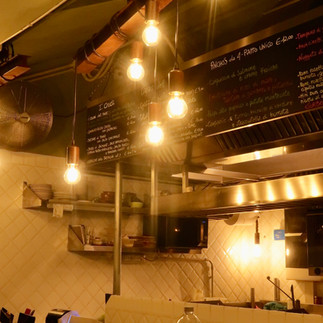Beautiful Bologna: Off the beaten path in Italy's most livable city
- Karyn Farrell
- Aug 26, 2022
- 16 min read
Updated: Sep 17

Santo Stefano, Bologna
Disclosure: some of the links on this site are affiliate links with companies I have chosen to partner with. If you make a purchase through these, I may receive a small commission at no extra cost to you. Thank you for your support!
Bologna is a city you'll want to return to again and again. Teeming with life, it's got endless spirit and an all-pervasive energy and atmosphere. Architecturally beautiful, its historic centre is a joy to explore, from its grand piazzas to the maze of tiny streets that make up the Quadrilatero. Its citizens are warm, friendly and welcoming and it's easy to see why its frequently cited as one of Italy's most livable cities.
A rich food scene lies at the heart of it all with countless fantastic bars and restaurants to choose from, and a bustling night life. Culture vultures will be spoiled for choice with the number of world-class museums and galleries, not to mention the free events which take place all over the city, particularly during the summer months. Cinema under the Stars and live music are just some of the delights on offer - more on that below.
Bologna's Centro Storico is instantly alluring, its rich architectural history documented and preserved under a strict conservation policy implemented in the Seventies. The Portici are a symbol of the city and one of its most unique aspects. Over forty kilometres of arcades cover its streets, meaning you can walk completely sheltered from the rain or searing sun - an absolute godsend during the recent heatwave.
One of the few remaining walled cities in Europe until the late 19th century, the vast city gates on the perimeter are a nod to its Medieval past - ten out of the original twelve are still standing including the iconic Porta Saragozza (below) dating to the 13th century but restored in the 18th.

Porta Saragozza, Bologna
Table of Contents:
All of the points of interst, restaurants and bars mentioned in this article are pinned here for your convenience
Bologna is referred to alternately as La Grassa, La Dotta and La Rossa - The Fat, The Learned and The Red, and this sums up its essence: a city that feeds your belly and your soul. ‘La Grassa’ is a nod to its reputation as a hub of regional cuisine: rich, indulgent and waistline-expanding. 'La Rossa' has a dual-meaning, alluding to both its archetypal terracotta-hued buildings and its long history of left-wing politics. 'La Dotta' references its university: founded in 1088, it's considered to be the oldest in the Western world. Today the Palazzo Archiginnasio, once the main building of the university, is open to visitors and gives us an insight into this significant and progressive centre of learning.
What to do in Bologna
After a flying visit in 2018 (write-up here), Bologna had stolen our hearts and we vowed to come back for a longer trip. This time around we had an indulgent five days to explore its main attractions but also its less-touristed spots, courtesy of some insider tips from our Airbnb host. Getting off the beaten path in Bologna is surprisingly easy and recommended. Here's a snapshot: open-air cinema, lively food markets, live jazz, traditional trattorias, upmarket cocktails with a view, a hike under the world's longest portico, criminally cheap but delicious regional wines, a visit to an extraordinary 17th century anatomical theatre and two exceptional art collections. And that's just for starters...

A fun and interactive scavenger hunt
First question - would you like to discover some of the secrets and curiosities of Bologna without having to commit to a guided tour? If so, then the ClueGo trail app might be for you. Part self-guided tour and part scavenger hunt, the app allows you to have an immersive and interactive experience through the city, following a trail of fascinating stories. Your powers of observation and creativity will be tested to solve the clues and riddles to get from one destination to the next. It's a fun and unique way to experience a city, and you can do it at your own pace.
Price: €17.99 for a max group of 5 people. It's a 3 km trail with 12 stops and 12 riddles. Join the fun here
Buona fortuna!!

Finestrella di Via Piella
Le Due Torre (The Two Towers) are the iconic image of Bologna and a visit to the city is not complete without a climb to the top of the Torre degli Asinelli. The tallest leaning medieval tower in the world was built in the early 12th century: at a whopping 498 steep steps, this is not for the fainthearted, the vertigo-prone, or the claustrophobic but if you can set those things aside, the panoramic views from the top are totally worth it - acres of orange rooftops as far as the eye can see.
During Medieval times, 180 defensive towers were built, twenty of which remain to this day. The leaning Due Torri (Asinelli and Garisenda) are the most famous, though there is no access to the latter. Tickets: €5 adult. Book here
Hike the world's longest portico...
Sanctuary of the Madonna di San Luca
See that tiny speck of a church on the hilltop in the photo below? Well that's your destination... If the Torre degli Asinelli didn't quite test your fitness levels to the max, this will definitely put you through your paces.

Though it may look a lot further away, the Sanctuary of San Luca is actually only 6.5kms from Piazza Maggiore or 4kms from Porta Saragozza. A place of religious worship for centuries, its hilltop location on the Colle della Guardia is surrounded by forest and connected to the city by the world's longest portico, winding its way uphill and boasting over 600 archways.
There are many points of interest along the route, including a series of votive plaques and frescoed chapels. The striking Arco del Meloncello is an 18th-century Rococo pedestrian portico that arches and swoops dramatically across the main road. It represents the start of the final portico leading up to the Sanctuary of San Luca. On the descent, make sure to stop off for lunch at the Trattoria Meloncello - see Eating and Drinking below.
Make no mistake - it can be a tough ascent in parts, particularly the final uphill stretch, and even more so when the temperature has reached 35 degrees by 10am. You may have scoffed at the notion of taking the San Luca Express tourist train from the city centre but you might change your tune by those last 2 kms. The fabulous views are totally worth it though.
At the top you'll find a terrace with a sweeping vista across the Bolognese landscape. After a sweaty uphill climb, those benches shaded by overhanging trees will be a very welcome sight.

And now to visit the Basilica. The Baroque building we see today dates to 1765 but historical sources reference the presence of a hermit on this site since the early 12th century. Step inside to see paintings from the seventeenth-century Bolognese School, including a Madonna by Guido Reni, and an elaborately frescoed dome.

It's free to visit but there is a €5 fee to ascend to a further viewing platform on the exterior of the dome. Describing the view as a '360 degree panorama' is a tad misleading as it's only possible to access about a third of the platform. A 90 degree panorama might be a more accurate representation so I'm not convinced it's worth it. The views from the arcades of the Basilica are just as impressive.
Cinema under the Stars
From mid-June to mid-August, Piazza Maggiore is transformed into an open-air cinema, showcasing a varied programme of films from arthouse to mainstream; from Pasolini to Richard Curtis. It's free of charge and first-come-first-served so arrive early to nab one of the premium viewing spots. It truly was a cinematic experience and one of the highlights of our trip: a complete immersion in film in one of the city's most beautiful settings.

Insider tip: arrive even earlier and park yourself at one of the prime outdoor tables at a bar on the piazza to enjoy waiter service throughout the film. Sotto le Stelle del Cinema 2025 programme here
Teatro Anatomico

The remarkable Anatomical Theatre is something no visitor to the city should miss. Located within the magnificent Palazzo Archiginnasio, seat of the city university from 1563 to 1805, the theatre was designed for the teaching of anatomy to students: the room is laid out in an amphitheatre shape, while a lecturer's chair overlooks the demonstrator's table in the centre.
Designed and built by Bolognese architect Antonio Paolucci in 1637 and carved entirely in wood, it's one of the oldest preserved anatomical theatres in the world. One of the most striking features are the Spellati, or Skinned Men, two sculptures by Ercole Lelli which stand either side of the lecturer's chair. Dating to 1734, the intention was for students to 'visualise the open body like an open book'.
Look up to admire the beautiful coffered ceiling decorated with symbolic figures representing fourteen constellations while Apollo, protector of medicine, takes pride of place in the centre. Niches around the walls showcase statues of twelve famous physicians including Hippocrates, while on the upper register, high-relief busts of twenty anatomists of the Bolognese School look down on us from above.
Palazzo Archiginnasio

Factor in some time to explore the public areas of the wonderful Palazzo Archiginnasio. Built in the mid 1500s, it became the new seat of the university, bringing all of the faculties together in a single location. Architecturally it's impressive, its portico with double-height arcade arranged around a central courtyard; its walls highly decorated with ornate coats of arms and classical statuary.
Inside, two grand staircases lead to the upper floor which houses the Reading Room of the Library (closed to tourists), and a series of beautifully decorated former university classrooms. Visitors have access to the Stabat Mater Hall, now a lecture hall and auditorium, named in honour of the inaugural performance of Rossini's hauntingly affecting "Stabat Mater", played in this very room on the 18th of March 1842.
Adult admission (including Teatro Anatomico): €3. Children go free. Piazza Galvani, 1
Museums and Galleries
Last time around we visited the Pinacoteca Nazionale and MAMbo: Modern Art Museum Of Bologna (home of the Morandi Museum) so on this trip we opted for two of the lesser-known galleries.
Fondazione Lercaro
Located off the main tourist drag, Fondazione Lercaro is home to a small but exquisite collection of paintings and sculpture by some of Italy's finest 20th century artists.

The permanent collection showcases a substantial body of work acquired by Cardinal Giacomo Lercaro, archbishop of Bologna from 1952 to 1968. Friend and patron of the artistic community, these works were part of his own personal collection, some purchased, others given to him as gifts. Giacomo Manzù went one step further and commemorated him in bronze (see image 1 below) - Cardinale Seduto, dating to 1950.
Manzù's sculptures are some of the highlights of the collection, and you can't help but be charmed by the Quatro Chierichetti by Francesco Messina, a group of choirboys engaged in four different actions: singing, in prayer, in service and reading. The expressions on their faces are remarkable.
The permanent collection also includes sculptural works by the fantastic Arturo Martini and Mimmo Paladino among many others. You'll also find paintings and prints by Giorgio Morandi and Giacomo Balla. It's a little undiscovered gem and entrance is free.
Fondazione Lercaro, Via Riva di Reno, 57
Palazzo Albergati

Palazzo Albergati, Bologna
This imposing Renaissance style palace is today home to one of the city's most happening gallery spaces. With a history of exhibiting internationally renowned artists including Monet, Chagall, Warhol, Magritte and Dalí, this is somewhere to keep an eye on if you're planning a visit. Happily our trip coincided with two outstanding photographic exhibitions.
On the ground floor was Photos! featuring masterpieces from the Julián Castilla collection. Described as one of the most important private collections in Europe, this is no exaggeration. The exhibition includes some of the most iconic and instantly recognisable photographic images from the past century including Alberto Korda's Che Guevara, Cartier-Bresson's adorable Rue Mouffetard and Robert Doisneau's romantic Kiss by the Hôtel de Ville. But this is just the tip of the iceberg. Also on show is the devastating Falling Man by Robert Capa and one of the last ever photos taken of Marilyn Monroe.
On the upper floor was an endlessly entertaining and thought-provoking retrospective of the work of the great Italian provocateur Olivieri Toscani. Most recently he's been on our screens as a judge on Sky Arts Master of Photography, but he's best-known worldwide for designing controversial advertising campaigns for Italian brand Benetton from 1982 to 2000. Never one to shy away from controversy, Toscani tackled head-on issues such as racism, the death penalty, AIDS, war, sex, violence and anorexia in his campaigns and is still making waves today. Unmissable!
Both exhibitions end 4th September 2022. Full price ticket: €15. Reductions €5-€13
Palazzo Albergati, Via Saragozza, 28
Music
Live Jazz at Gardens of Porta Europa
Another highlight was an evening of live jazz under the stars, in the peaceful surroundings of the Gardens of Porta Europa to the north-east of the city. Featuring the Italian Eric Rava on trumpet and flugelhorn, and renowned American pianist Eric Hersch, the concert was one of a month-long series of live music events promoted by Cubo Live, in collaboration with Bologna Jazz Festival.

The sound was crystal-clear, the performance something special. Audience members sat on chairs circled around the stage, or relaxed on the surrounding lawn area. Locals in the know arrived with blankets, cushions and picnic-baskets and made themselves at home on the grass. And don't worry - if you haven't come as prepared as the residents, you can grab yourself a take-way drink at La Porta bar and restaurant, Piazza Vieira de Mello, 4
Entrance free. Full line-up from Summer 2022 programme here
Santo Stefano
Santo Stefano is one the city's most popular attractions, an astonishing complex of four interconnecting churches (there were originally seven), all from varying periods of history and each with its own distinct architectural characteristics.

Visitors enter the complex from the picturesque Piazza Santo Stefano - your introduction is the Church of the Crucifix, the largest and most prominent of the four extant buildings. Dating to the 8th century, the interior is austere while a painted figure of Christ on the cross hangs above the stairs. Stepping back three centuries you enter the beautiful Church of the Sepulchre, modelled on the church of the same name in Jerusalem. It has a central plan with marble and brick columns, some dating from Roman times.
The next exit will bring you to the Basilica of Saints Vitale and Agricola, the most austere of the churches. It has little by way of decoration and is the oldest of the structures, dating from the 4th century. From here you can access the beautiful Pilate's Courtyard: an oasis of calm and tranquility at the heart of the complex.
Your final stop is the Church of the Holy Cross: above the altar hangs a stark, solitary figure of Jesus on the cross. Don't miss the colourful Adoration of the Magi by Simone dei Crocifissi, one of oldest sculpted nativity scenes in the world, dating to the 13th century.
Entrance is free. Piazza Santo Stefano
Eating and Drinking in Bologna
Emilia-Romagna is a region famed for its rich and indulgent cuisine, hence its nickname La Grassa, so it follows that its capital city is a food lover's dream. Specialties include Tagliatelle al Ragù and Tortellini in Brodo. You will be absolutely spoiled for choice when it comes to eating out but it's good to get a recommendation from someone in the know. In a nutshell, stay off the main tourist spots and don't be swayed by a glossy façade. In our experience, the old-fashioned, slightly ramshackle spots had the best food.
Piazza Aldrovandi
Dive into the aperitivo scene on one of Bologna's coolest streets. Piazza Aldrovandi is one of the city's best-kept secrets, at least to tourists, and it comes noisily to life every evening from 6pm with food trucks and stalls serving a variety of cuisines and drinks. Tables and chairs spill out onto the pavement while overhead fairy lights add atmosphere when the sun starts to fade. This is not where your typical tourist hangs out so it's a nice introduction to a more local scene.
Best for cocktails: Ripasso P.za Aldrovandi, 5c
Side note - their Manhattans are seriously potent.
Also, fun vibes at Sorbole Que Tapas, offering fish specialties in tapas format. P.za Aldrovandi, 9/2b
Classy cocktails with a view
Treat yourself to at least one cocktail at the fabulous Camera con Vista on Piazza Santo Stefano. And if you're just having one, make it La Grande Bellezza, their signature Champagne cocktail - it's quite special.
Camera con Vista, Via Santo Stefano, 14/2a
It's a little pricier to eat and drink on Piazza Santo Stefano, but it's worth it just once to enjoy the fabulous view. We also loved Agricola e Vitale which has the best vantage point of the church and piazza, but also serves great food. The vibe is fun and youthful, staff are friendly and the tunes are great.
Via Santo Stefano, 13a
Special mention goes to the Cremeria Santo Stefano which serves the best artisanal gelato in the city. Fact! Be prepared to queue no matter what time you arrive but it's worth it. And FYI: the pistachio is off-the-charts...
Cremeria Santo Stefano, Via Santo Stefano, 70c
Le Serre dei Giardini Margherita
Spend your Saturday evenings as the locals do and hang out in the leafy surrounds of the Giardini Margherita. Le Serre dei Giardini Margherita (Greenhouses of the Gardens) is a regenerated public space, and hub of cultural, educational and recreational activity in the south of the city. Over 650 square meters, expect to find cafés and bars, live music, public art and a cinema, in addition to gardens and greenhouses filled with plants and flowers. It's a remarkable place and full of life.

In one corner of the park is a seating area with food trucks selling pizzas and burgers, while another housed a bar. We managed to nab the last free table and enjoyed some cheap and cheerful (and delicious) pizza, washed down with an Italian beer or two. The atmosphere was buzzy, full of locals and a mix of all ages, young and old.
Le Serre dei Giardini Margherita, via Castiglione, 134.
The gardens are located between two of the old Medieval city gates: Porta Castiglione and Porta Santo Stefano. For more info and updates, check out their cool interactive website here
Restaurants we loved
Trattoria Meloncello - renowned for their Tagliatelle al Ragù, this was one of the best meals of our trip. A slightly grungey exterior belies the culinary delights that lie within. The place was chock-full of Italians at lunchtime but they offered us the last outdoor table on the terrace. Service was warm and friendly and food was exceptional, including a gnocchi with sage and butter, and a rum-based Budino di Amaretto dessert to share. Great value too at €8 for a carafe of Pignoletto Frizzante. a regional sparkling and utterly delicious wine.
Something to note: one of the oldest trattorias in the city has long been a favourite hangout for actors, musicians and other creative types. Look out for the fabulous black and white photos on their unofficial wall of fame including a signed photo of Dario Argento, Italian film director, producer and actor, and master of the horror genre.
Via Saragozza, 240a
Osteria Broccaindosso - an old-school trattoria serving hearty local cuisine. Their Tagliatelle al Ragù is legendary.
Arrive hungry - the portions are enormous - and glasses of the regional Pignoletto wine are a mere €3. And if you can manage to squeeze in a dessert, you're my hero.
Via Broccaindosso, 7/a
Parlor - a trendy upmarket bistro with an innovative menu featuring creative and modern twists on traditional Italian dishes. Fish and seafood feature prominently. Order the zesty and flavoursome Tartare di Salmone if you're looking for a break from a pasta-heavy diet - it's seriously good. Book ahead to secure a street-side table.
Via Cartoleria, 12a
Trattoria Pizzeria delle Belle Arti - come here for the best woodfired Neapolitan pizza in town. In the heart of the lively university district lies this little gem with a friendly neighbourhood vibe. It's cheap and cheerful - a carafe of the regional Pignoletto Frizzante costs a mere €6. Waiter Denis was a real character - full of fun with a cheeky glint in his eye, but also with a real pride in the food that they serve. He prepared a little bowl of warm stewed apple, fresh fruit and cream on the house for me as I prepared to pay the bill. Top marks.
Via Belle Arti, 14
Osteria La Fontana - a friendly, local spot just a few doors up the street from our apartment with a cool pared-back décor offset by bright graphic artworks. Excellent service from the warm, knowledgeable and chatty staff made this one of the most memorable meals of our trip, and we loved their modern take on traditional Italian ingredients. A crispy fried polenta topped with soft squacquerone cheese and peppery rocket was an absolute delight and their advice on a light red wine to accompany our meal was spot-on.
Via Fondazza, 83a
Enhance your Bologna foodie experience with Get your Guide
To deepen your Bologna experience, why not sign up for a 3-hour secret food tour with a passionate local, or test your skills with a pasta-making class, accompanied by some organic wines? Short on time? Then maybe consider signing up for a walking tour - in two hours you'll enjoy a whistlestop tour of all the city's major tourist attractions.
Or how about a vineyard tour with a chance to sample some delicious local wines? Get Your Guide is an excellent resource for curious travelers with a range of tours and excursions, local attractions and fun interactive activities. Check out what's happening in Bologna here
Great bars
You can't go wrong in the vibrant Quadrilatero District: a maze of tiny streets bordered by Piazza Maggiore and Nettuno to the west, Via Rizzoli to the north, Via Castiglione to the east and Via Farini to the south.

During the day it functions as the old city market with stalls selling fruit and vegetables, meat, fish and pasta. By evening, the streets are transformed as bars open and spill out onto the street for aperitivo time. Stop off at Zerocinquantino for a chilled glass of Pignoletto Frizzante - a snip at €4 a glass. They also have a fantastic menu of cold cuts, cheeses and sharing plates.
Via Pescherie Vecchie, 3e
Dublo - a friendly neighbourhood bar at the less touristy end of Santo Stefano, and one which quickly became our go-to spot for a night-cap. The atmosphere is relaxed and convivial with seating at outdoor tables under the portico. Hip without being hipster, this is a place where locals hang out but visitors are warmly welcomed. It's also good value for money - €9 for a Spritz, beer and a water.
Via Santo Stefano, 77
Where to stay

Described as a "A gorgeous haven in Centro Storico", our Airbnb certainly lived up to our expectations. Our city pad on Via Fondazza was an absolute haven of tranquility on a quiet residential street, yet we were just a short walk from one of the city's main piazzas, Santo Stefano. The location was absolutely perfect.
Via Fondazza was home to the Bolognese painter Giorgio Morandi who lived and worked in the city until his death in 1964. He lived simply, never veering too far from his small studio, and often painted the views from his window. As we opened the shutters of our bedroom, it became clear why it was so appealing to him - despite its proximity to the Centro Storico, it feels like a world away, surrounded by trees and gardens, waking to the sound of birds singing every morning. We slept with the windows open every night and relished those early-morning sounds as the city quietly came to life.

The painter's house at number 36 is now a museum and open only for a few hours per week. A tiny square has been dedicated to him, overlooked by the picturesque Chiesa di Santa Cristina. I like to think its chalky texture and colour, not unlike his paintings, would've made Morandi very happy.
Getting there and practicalities:
Fly direct to Bologna Guglielmo Marconi Airport. Flights are through Ryanair
At the airport, take a taxi or the Marconi Express to Bologna Centrale - the airport is approx 10-12kms from the city centre. All options are outlined here
Traveling with a group? Welcome Pickups offer excellent value for money and a reliable airport transfer service. Book your transfer here
If you're planning on exploring the wider Emilia-Romagna region, Discover cars offers trusted and good value car rental options.
For a greener public transport option, it's worth noting that Italy's main cities are very well connected by rail, with reasonably priced fares too. Omio is my go-to site of choice for train bookings: it's user-friendly and allows you to compare prices for trains and buses across Europe. Book here.
Need to leave your bags somewhere for a few hours? For €5 per bag per day, Radical Storage conveniently has outlets all over Bologna. Book in advance here.
Buon viaggio,
Karyn xx





















































































































































































